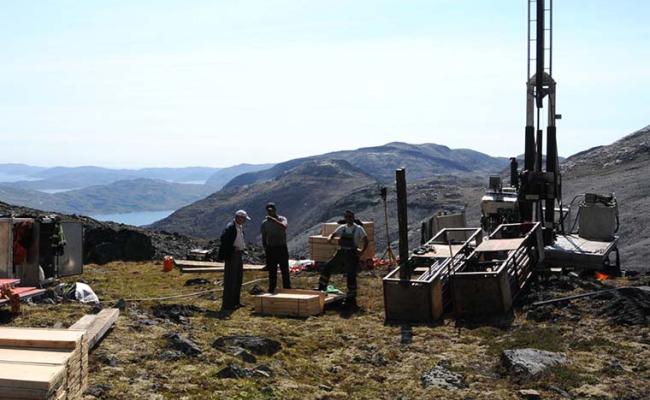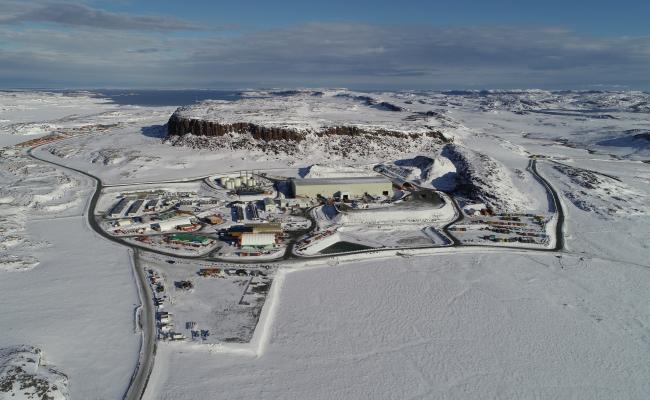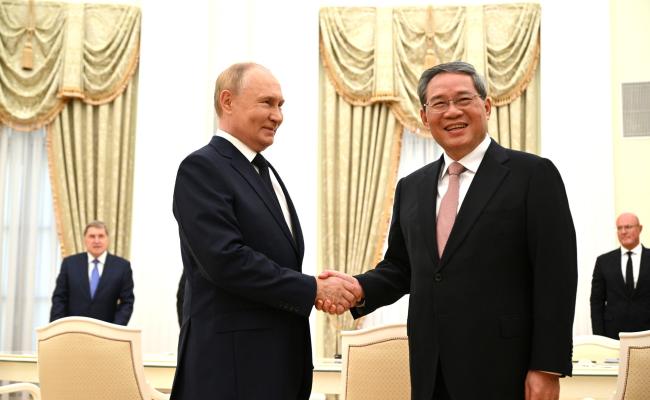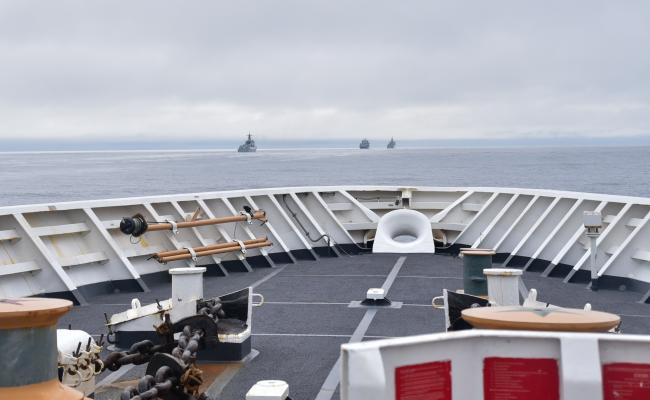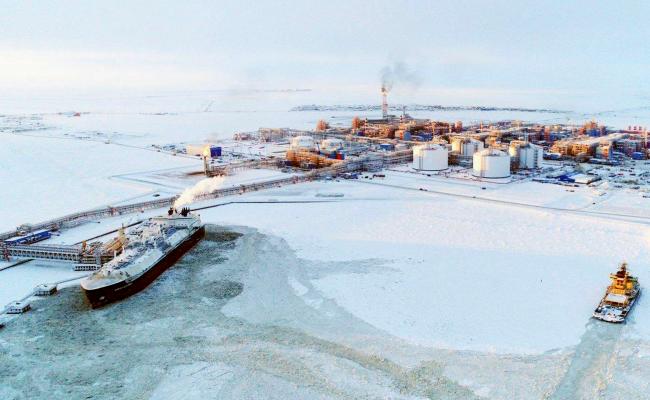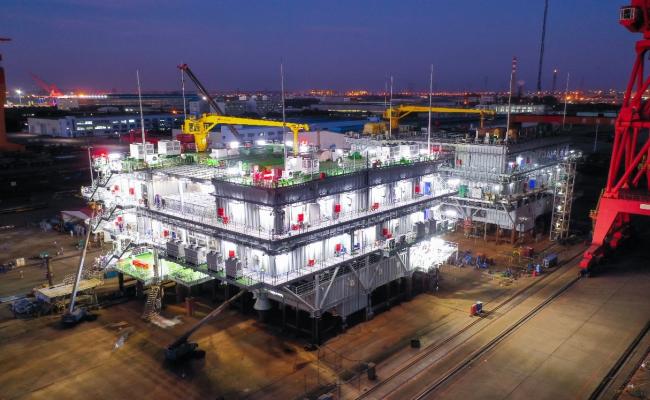Report: Most Chinese Investments in the Arctic Have Not Fully Materialized
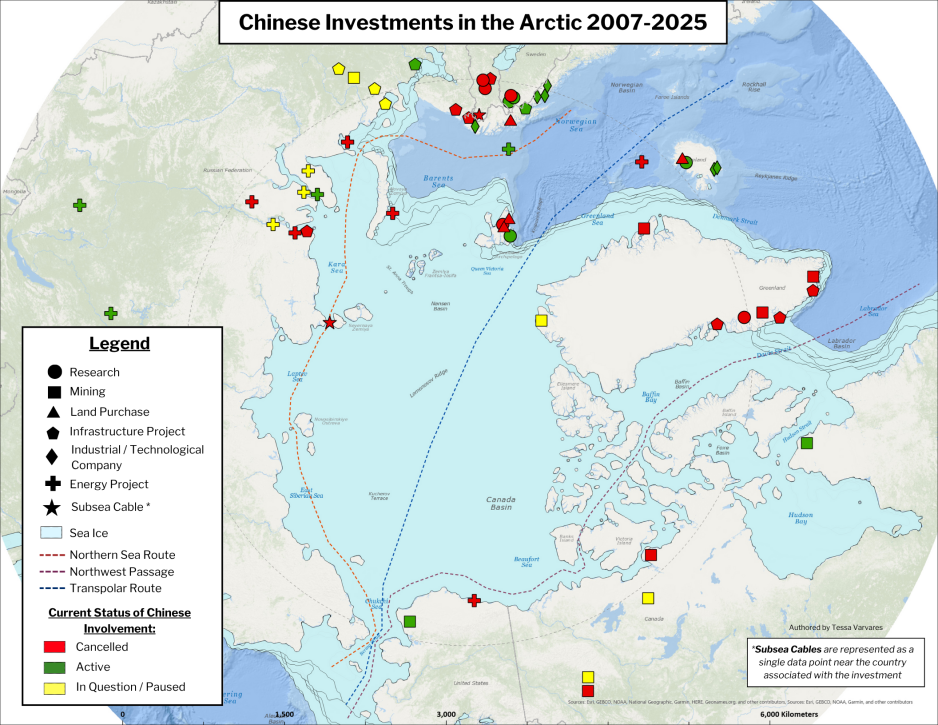
The figure shows Chinese investments in the Arctic region. Red dots show cancelled projects/investments, while yellow dots show those that are paused or in question. Green dots show active investments/projects. (Figure: Tessa Varvares/Belfer Center).
Outside of Russia, most recent Chinese investments in the other Arctic states have stalled or failed, according to a new report. "If we are to have a proper conversation about Chinese investments in the Arctic, it is important to create a joint, evidence-based understanding of the scale and scope," says researcher Anders Edstrøm.
Researchers at Harvard University and Canada's Trent University have mapped Chinese economic activity in the Arctic region, including research stations, infrastructure construction and ownership, energy projects and mining.
The results were recently published in a policy brief by Harvard's Belfer Center, contradicting a common narrative that China is "buying up the Arctic".
A factual debate
According to the researchers, only a small proportion of China's ambitions and plans for investments in the Arctic have fully materialized. And outside of Russia, most recent Chinese investments in the other Arctic states have stalled or failed.
"We do not claim that one should not be concerned about Chinese investments in the Arctic, but we also find that the scale and scope of investments is less than one might think based on the public debate," says co-author Anders Edstrøm to High North News.
Edstrøm is a Visiting Researcher with the Belfer Center’s Arctic Initiative and a PhD Candidate with the High North Center for Business and Governance at Nord University.

"If we are to have a proper conversation about Chinese investments in the Arctic, it is important to create a joint, evidence-based understanding of the scale and scope," says co-author Anders Christoffer Edstrøm. (Photo: Nord University).
Mixing proposed and actual investments
"A main point of the report is to illuminate Chinese investments as factually as possible, without exaggerations – or understatements," Edstrøm continues.
On this note, the researchers, for instance, found that unsuccessful proposals are often taken into consideration when presenting the total amount of Chinese investment in the region.
"The difference between the number of green indicators versus stalled or failed projects is striking. Most investments were concluded several years ago," they write and add:
"Recent Chinese investment initiatives have increasingly met with headwinds in Arctic countries except for Russia."
We aren’t claiming that there is no cause for concern, but those debates must be rooted in reality.
Chinese interest in Greenland
According to the authors, Greenland, as part of the Kingdom of Denmark, is one of the best examples of this.
"There has been a lot of talk about the Chinese influence on Greenland, but the narrative of China 'buying up Greenland' has not been reflected in our results," Edstrøm explains and continues:
"When it comes to Greenland, we tend to see large claims about Chinese investments. In some accounts, it may seem that 'all' proposals for investments have been included, even though little has materialized."
Of eight proposed investments, seven failed or never materialized.
"Despite Greenland receiving intensive attention in the debate about Chinese investments and influence in the Arctic, it is apparent that most of this anxiety is about what might be, not what has actually happened," the researchers of the policy brief emphasize.
Though Chinese companies were interested in Greenland's mineral, oil, and gas resources, most proposed investments have in fact failed.
Of eight proposed investments, seven failed or never materialized, and the future of the Citronen mine (see map below) is currently uncertain, according to the policy brief.
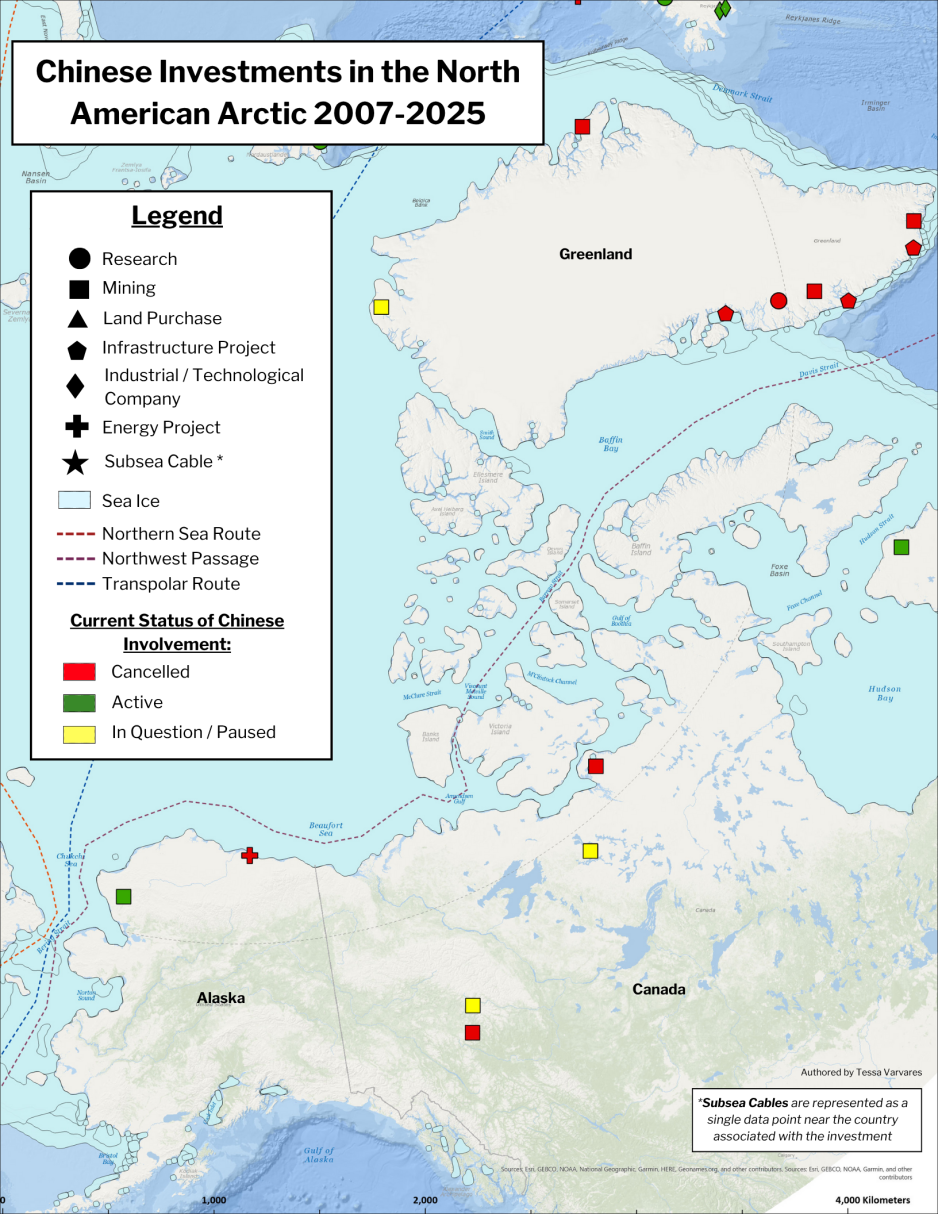
Map of Chinese Investments in the North American Arctic, including Greenland which is part of the Kingdom of Denmark, but geographically located in the North American Arctic. (Figure: Tessa Varvares/Belfer Center).
“Inflated claims about Chinese investments have been used to justify different policies and stances, such as the Trump administration’s insistence that Denmark has failed to protect Greenland from Chinese encroachment," said co-author of the study, Guðbjörg Ríkey Th. Hauksdóttir, in a statement.
Hauksdóttir is a Predoctoral Research Fellow with the Belfer Center’s Arctic Initiative and a PhD Candidate at the University of Iceland.
"We hope this brief can facilitate informed debate and decision-making among the Arctic states when they are deciding how to engage with China,” she adds.
Key findings
- Russia:
- Has by far the largest amount of Chinese Arctic investments of all the Arctic states.
- The most notable is the Yamal LNG (liquified natural gas) project which supplies European and Asian markets with gas by Arctic-class LNG carrier ships.
- Due to Western economic sanctions, Russia views China as a necessary economic partner to develop its Arctic.
- While Russia and China have cooperated on large investments in oil and gas production and infrastructure construction, several proposed projects have not panned out. - The Nordics:
- Out of the seven like-minded Arctic States, the Nordic countries (Norway, Sweden, Finland, and Iceland) have been most prominently engaged with China.
- Although China has been involved in investments, energy projects, and scientific research in the Nordic Arctic, many projects have stalled or failed in recent years.
- The US:
- While the United States receives more Chinese foreign direct investment than any other country in the world, Chinese investments in Alaska remain very limited.
- Greenland:
- Chinese companies, interested in Greenland’s mineral, oil, and gas resources, engaged with Greenland in the 2010s, most proposed investments have failed.
- Canada:
- With the exception of one nickel mining project, all Chinese investments in the Canadian Arctic have either failed or have been in abeyance for many years.
Chinese investments in the North American Arctic
Regarding the rest of the North American Arctic, the researchers find limited Chinese investments in Alaska, although the United States receives more Chinese foreign direct investment than any other country in the world.
In the Canadian Arctic, all Chinese investments have either failed or have been in abeyance for many years, except for one nickel mining project on the Raglan Peninsula in northern Quebec.
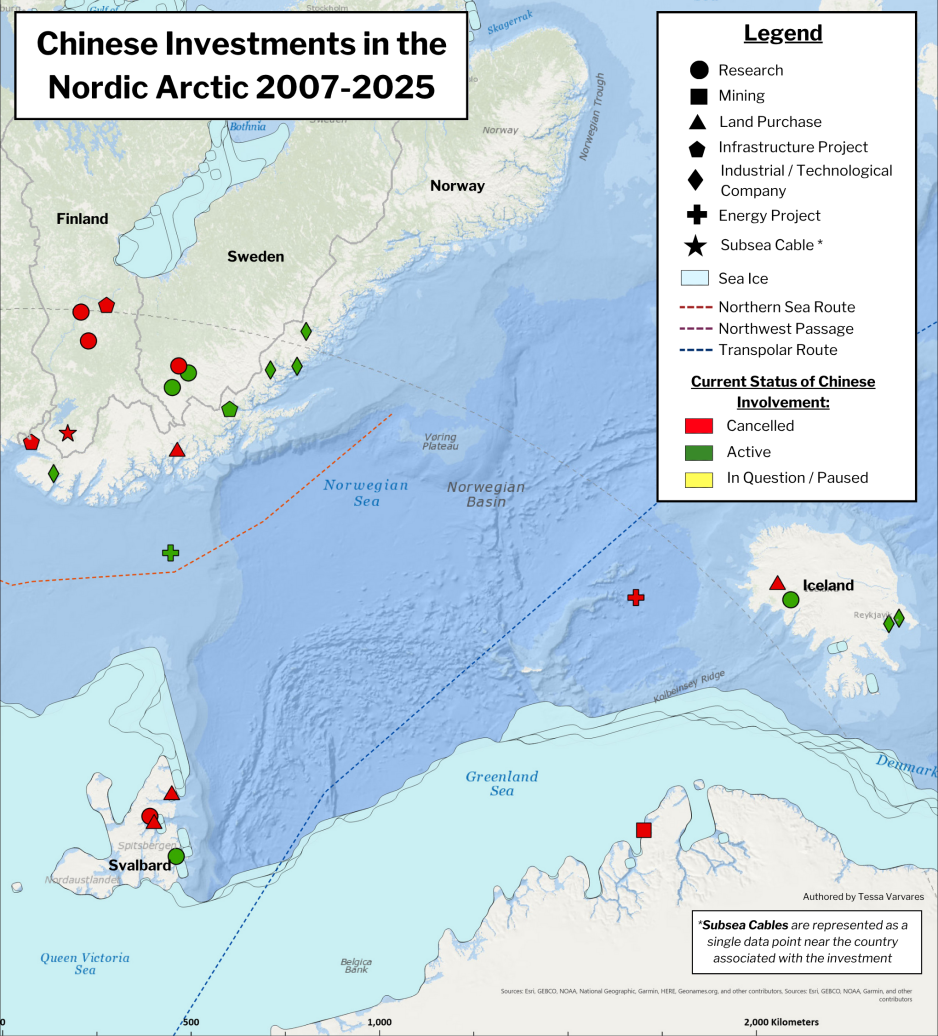
Though China does have interests and investments in the Arctic region, the researchers argue that the scale and scope of actual investments are often exaggerated in media and public debate. The figure shows Chinese Investments in the Nordic Arctic 2007 - 2025. (Figure: Tessa Varvares/Belfer Center).
Chinese investments in the Nordics
The authors of the report furthermore find that the Nordic countries (Norway, Sweden, Finland, and Iceland) have been most prominently engaged with China out of all seven like-minded Arctic states.
However, they also note that even though China has been involved in investments, energy projects, and scientific research in the Nordics, many projects have stalled or failed in recent years.
"In the Nordic Arctic, it may appear that China's window of opportunity has narrowed a little. There appears to be more balancing between security and business interests in today's international climate, than before. Things that were previously possible, seem more scrutinized now," Edstrøm explains.
Also read (article continues below)
Not at any cost
When explaining why only a small portion of Chinese ambitions and plans for investments in the Arctic have been realized, the researchers point to a wide range of complex reasons, including geopolitical and domestic political obstacles, security concerns, environmental concerns, as well as restrictions on the mining of ore containing uranium.
"In addition, Chinese companies will be concerned with the economics of the project, and there are examples where Chinese investments seem to have been shelved because of economic reasons," Visiting Researcher Edstrøm adds.
"Have awoken to the risks"
Co-author and professor P. Whitney Lackenbauer at Trent University says the findings also suggest that the seven like-minded Arctic states have awoken to the risks associated with various forms of foreign direct investment in the region.
"[These states] have responded more decisively and effectively than most popular commentary might lead us to believe," Lackenbauer says.
In closing, Edstøm also highlights that many Chinese investments are economically significant for their host communities, and that Arctic states must distinguish between projects that pose a security risk and those that are benign and desirable.
"We aren’t claiming that there is no cause for concern, but those debates must be rooted in reality,” Edstrøm reiterates in closing.


